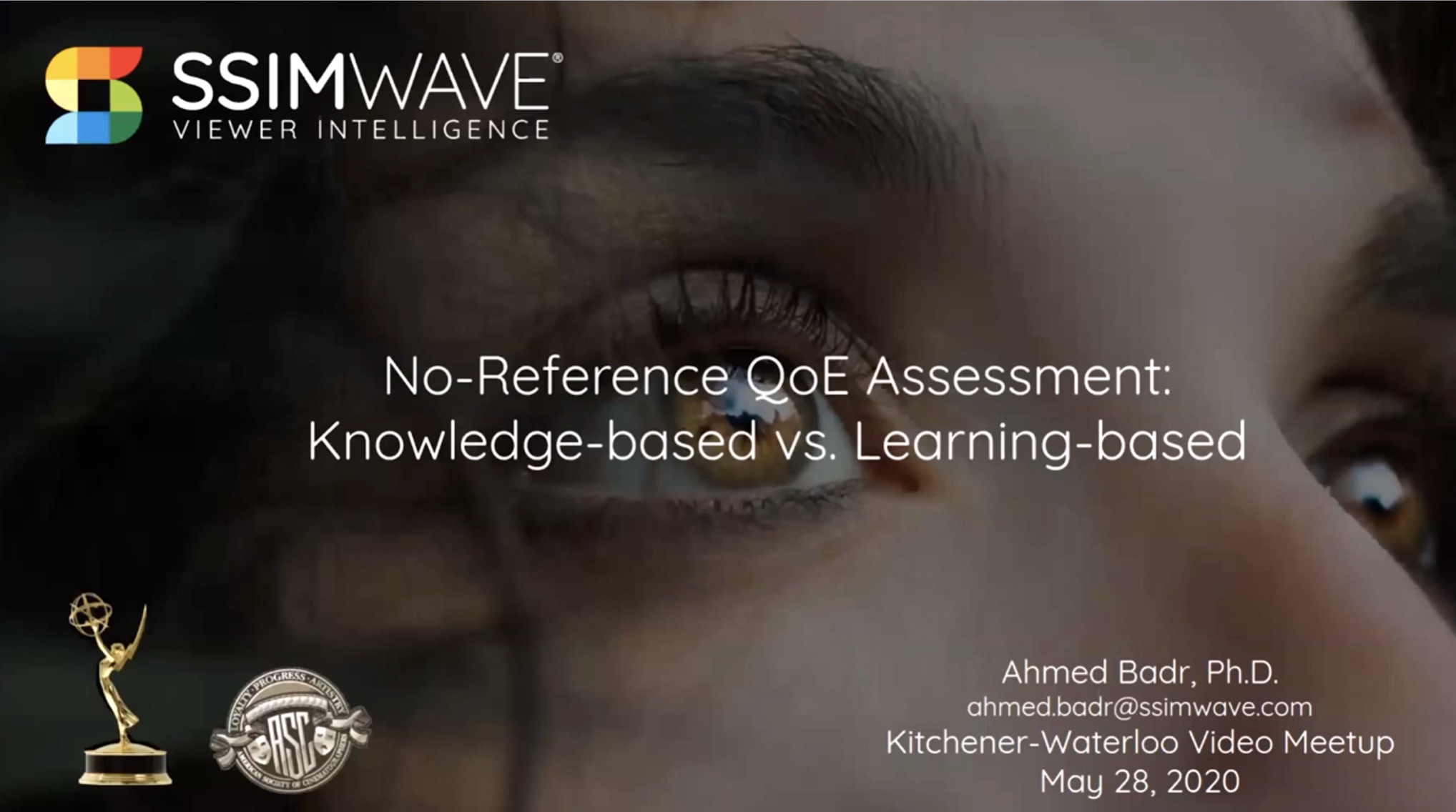Automatic assessment of video quality is essential for creating encoders, selecting vendors, choosing operating points and, for online streaming services, in ongoing service improvement. But getting a computer to understand what looks good and what looks bad to humans is not trivial. When the computer doesn’t have the source video to compare against, it’s even harder.
In this talk, Dr. Ahmed Badr from SSIMWAVE looks at how video quality assessment (VQA) works and goes into detail on No-Reference (NR) techniques. He starts by stating the case for VQA which is an extension, and often replacement for subjective scoring by people. Clearly this is time-consuming, can be more expensive due to involvement of people (and the time) plus requires specific viewing conditions. When done well, a whole, carefully decorated room is required. So when it comes to analysing all the video created by a TV station or automating per-title encoding optimisation, we know we have to remove the human element.
Ahmed moves on to discuss the challenges of No Reference VQA such as identifying intended blur or noise. NR VQA is a two-step process with the first being extracting features from the video. These features are then mapped to a quality model which can be done with a machine learning/AI process which is the technique which Ahmed analyses next. The first task is to come up with a dataset of videos which should be carefully chosen, then it’s important to choose a metric to use for the training, for instance, MS-SSIM or VMAF. This is needed so that the learning algorithm can get the feedback it needs to improve. The last two elements are choosing what you are optimising for, technically called a loss function, and then choosing an AI model for use.
The data set you create needs to be aimed at exploring a certain aspect or range of aspects of video. It could be that you want to optimise for sports, but if you need a broad array of genres, optimising for reducing compression or scaling artefacts may be the main theme of the video dataset. Ahmed talks about the millions of video samples that they have collated and how they’ve used that to create their metric called SSIMPLUS which can work both with a reference and without.
Watch now!
Speaker
 |
Dr. Ahmed Badr SSIMWAVE |


